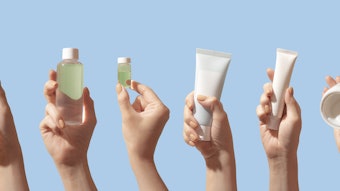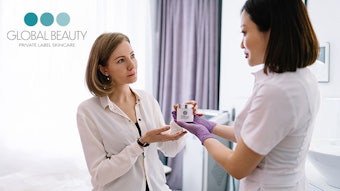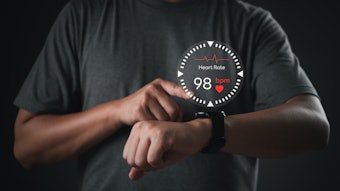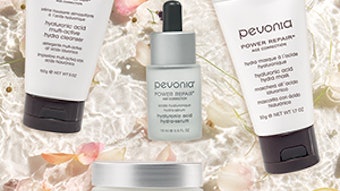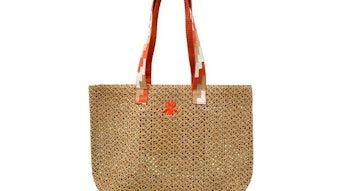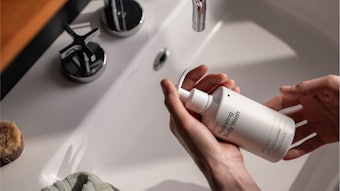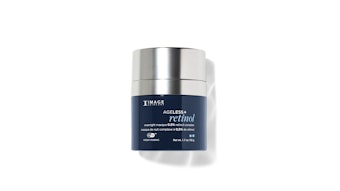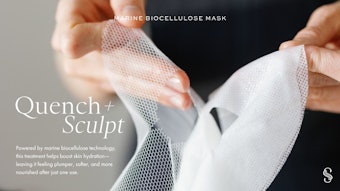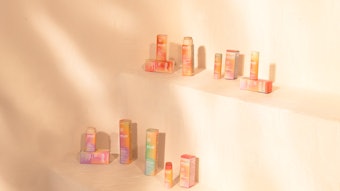
Sales, sales, sales, sales, sales and sales. I’ll say it one more time, sales. This is exactly what our clients hear when we present the product at the end of a service, and let’s face it, nobody likes to be sold anything. In fact, I bet you can remember the dread that came over you the last time you had a salesperson present you something, especially something you weren’t interested in. As estheticians and skin therapists, we want to help our clients with their skin conditions. It’s probably a big reason why a lot of us went to esthetics school in the first place. In the process of our appointments with our clients, we try so hard to tediously convince them that this is the perfect product for them. It has these ingredients, amazing properties or the latest technology, and it’s proven to work! You want this product because of X, Y, Z and yet, for some reason, they leave saying, “I’ll think about it.” We feel defeated and think, “Why?! I explained the product so well.” Does this sound familiar? The truth is, it’s highly unlikely that they need to think about it, and it’s likely they had already made up their mind that they didn’t want the product before you even finished the first sentence.

In the world of retail sales and business building, we have a multitude of tools at our disposal. I’ve been through countless classes teaching how to close a sale, overcome objections, explain products and the list goes on and on. While these are all great tools, it doesn’t make sense to use the wrong tool for the wrong job. You wouldn’t use a hammer to cut a piece of wood in half, or a screwdriver to hammer a nail in, would you? Selling someone something they aren’t interested in doesn’t work. You can have all the sales skills in the world, but if we don’t gain an understanding of who our clients are and what drives them to purchase a product, the tools are useless. The most under-utilized tool, and the tool we should use first for the job, is listening.
What Is Important to Them?
If I listen close enough to what my clients say, they will tell me what they are most likely to purchase. Have you ever had a friend tell you a story that they think is so fascinating? You try so hard to listen and nod your head at the appropriate times, but by the end of the story, you have no idea what they just said. I bet that while your friend was telling you their story, you were thinking about something important to you. The truth is, people are interested in what is happening in their own lives.
This truth applies to our clients as well. If I analyze the skin, tell the client what I see and recommend a product based on that factor, aren’t I making the sales process about myself instead of them? After all, what our clients see in their skin versus what we see can be two completely different things. I can’t tell you how many times I’ve looked at clients’ skin and thought, “Okay, they have crow’s feet, laugh lines and dryness, they must be interested in an anti-aging serum.” When I ask the question, “What concerns do you have with your skin that I can help you change or prevent today?” they respond with, “I have acne.” It’s human nature to make it about ourselves, but the truth is people don’t buy based on what you tell them they need; they buy based on their own wants or needs. People also love to shop rather than be sold, so offer them choices in texture and smells for products that treat what they care about. When your clients tell you that they care about something specific, believe them. They are telling you what they are most likely to spend their money on, and you should recommend your products based on that factor.
Right Concern, Wrong Step
The other challenge that can happen in the initial sales process is choosing the wrong steps of products to recommend, even if you focused on the right concern. This happens when after recommending a product geared to a client’s skin type, the client still walks away from the purchase saying, “I already have this product at home.” If our clients say this, they are telling us that we recommended the wrong step. The hardest thing to sell someone is what they already have. You wouldn’t purchase a brand-new SUV from a car salesman if you just purchased one, right? What if instead, the salesman focused on selling you accessories for your new vehicle? The likelihood of you making a purchase from that salesman just went through the roof. We should take this same approach with our clients and focus on accessorizing our clients’ current regimen instead of replacing it. Focusing on what they don’t already have will go a long way toward getting on the road to retail success.
To discover the right step to recommend, ask questions. Once again, questions are the greatest tool that will allow us to listen to what the client is most likely to purchase. I’ve already mentioned the question, “What concerns do you have with your skin that I can help you change or prevent today?” While this is a great beginning, it isn’t enough information to help me understand what my customer is most likely to purchase. Take it a step further and ask the client what steps they are currently using to see results in the skin. It is crucial to use the word steps instead of products when asking this in a consultation. The word products potentially means brand names to our clients, whereas the word steps, means steps.
Communication and verbiage are key in sales. If I only identify what brand name a client uses, it doesn’t tell me a lot other than the amount they spend on their skin care, which I don’t care about anyway. My personal belief in sales is that people don’t care about the cost of the product if they value it enough for what it does for them. Walk through the steps with them, as many clients forget what steps they are using at home or perhaps don’t know all the steps available. Listing more steps to them could peak their interest and potentially cause them to spend more money.
Sell In Systems
How would you like to double or triple your retail sales per client? If you said no, stop reading this article now, but my instincts tell me that you said yes. Selling in systems is a way to do this. After I have set myself up for success in sales by asking the two key questions mentioned previously, it is important that I refer to the products I am recommending as a system (i.e. acne system, lifting system, wrinkle filling system and sun damage system). I name the three to five products I set out for the client based on the concerns they told me they care about the most, and I always call it a system.
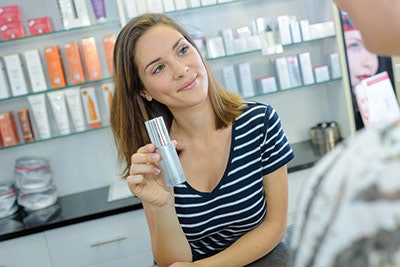
This turns individual products into a solution for their concern and makes their home care look as simple as possible. The easier the clients perceive the products are to use, the more likely they are to purchase. If I were to say to you as a client, “Here is the cleanser, mask, serum, oil and moisturizer I would recommend you start using on your skin,” I could be overwhelming you, especially if you’re a client new to skin care. It could also feel like I am trying to push the product on you, and this is the last thing we want to do as estheticians. If I say, “Here is the lifting system we are going to start you on today so that you can see results with your concerns you told me about,” it sounds much less overwhelming as a home-care routine and like a solution to the most important concerns of the client rather than just individual products.
Recommending products in systems also solves another challenge, the “budget conscious buyer.” For example, after presenting products to a client and trying to get the client to purchase, have you ever had a client ask, “Which is the most important product out of the ones you set out because I can only get one?” I bet you have. It’s such a let-down after you’ve done all of the work to have the client pull out another trick and lower the sales dollar amount. If we refer to the products as systems, the client is much less likely to try to separate them because they see the products as teammates that work together. After all, as much as I’d like for there to be a miracle product, there is no such thing as one product that does everything.
Use Your Tools
Our clients are telling us everything we need to know to be the best estheticians and salespeople in the industry if we will only listen to their hints. The key skills to remember to put to task during your next sales opportunity are recapped here.
- Always focus on the client’s concerns with the products you recommend, and ask them, “What are two concerns I can help you change or prevent in your skin today?” This will help you identify what the client cares about most and why they buy a product.
- Switch up your verbiage and replace the phrase “What products are you using at home?” with “What steps are you currently using at home?” In addition, walk them through each individual step available to them.
- Present the products in systems instead of as individuals, and watch your sales increase substantially as the clients will see the value in using them together to maximize results for their concerns. Name the system whatever concern they wanted to change.


